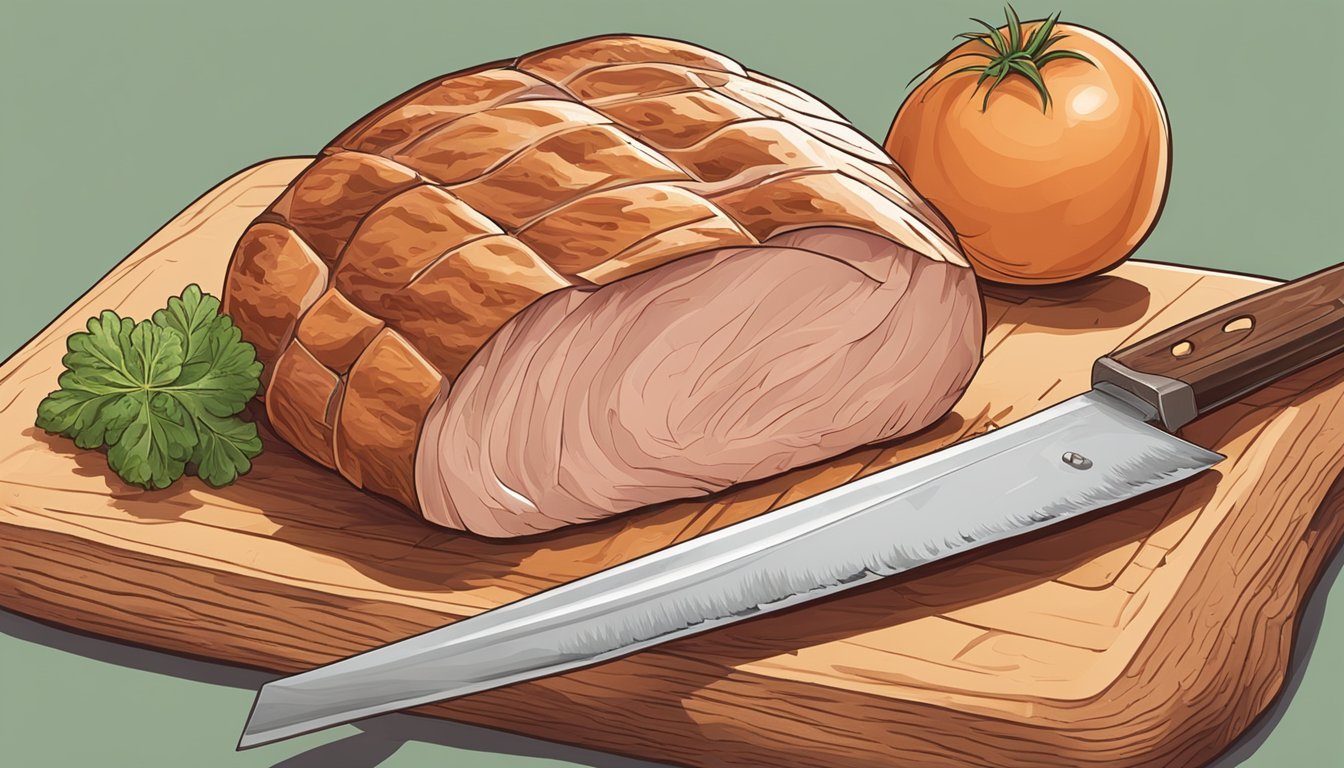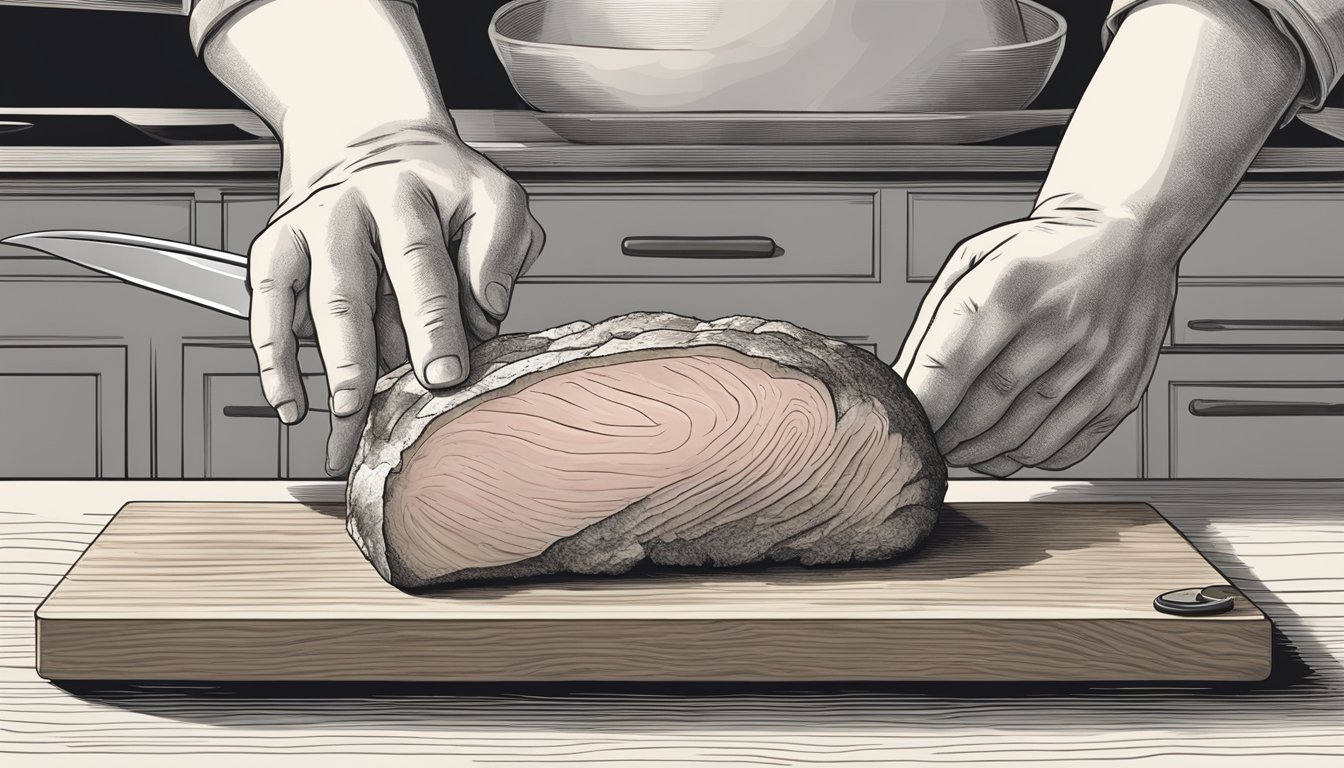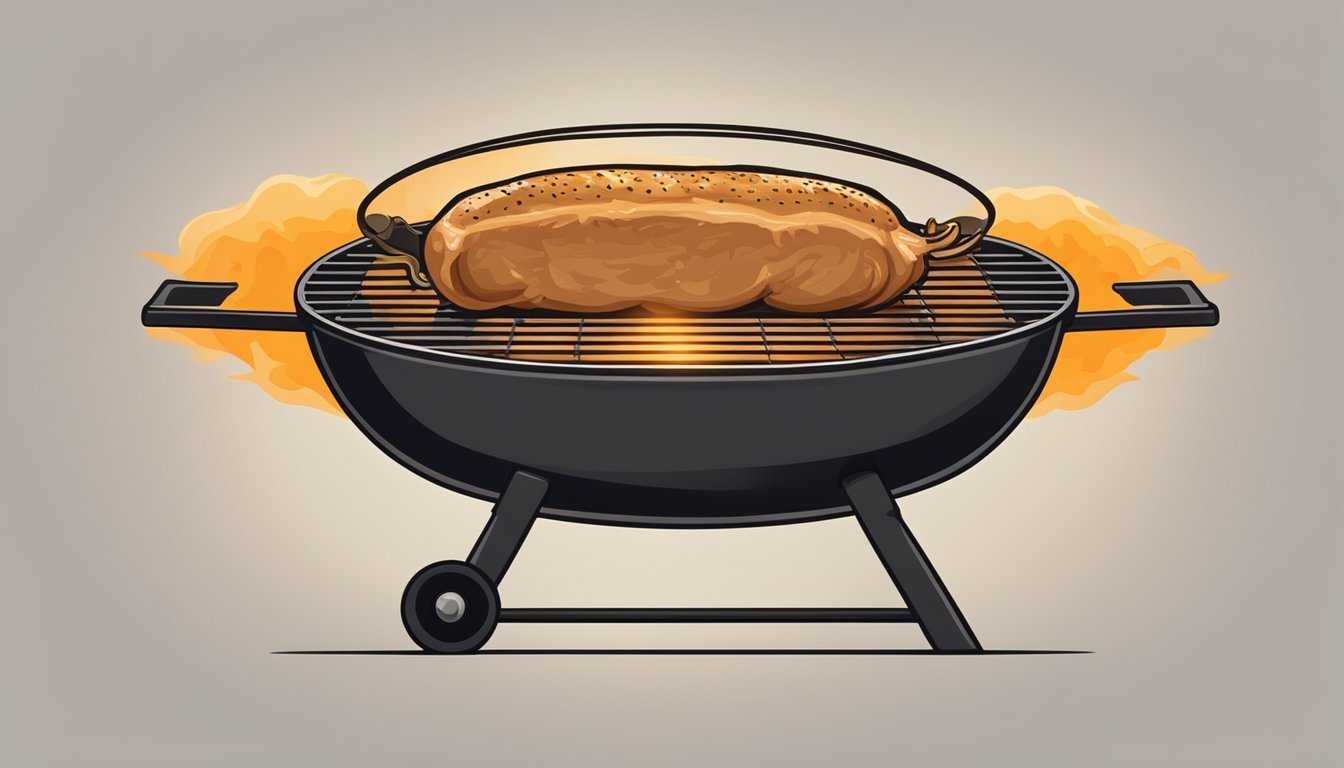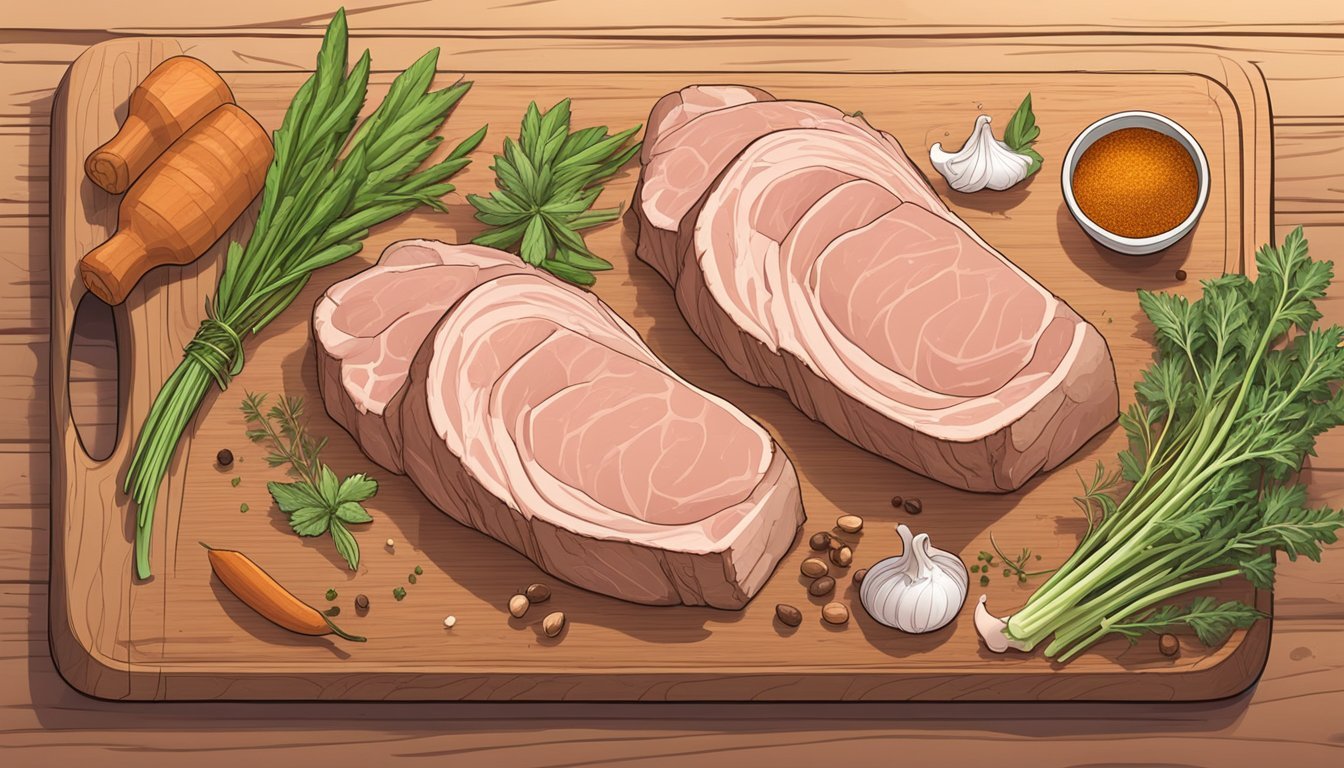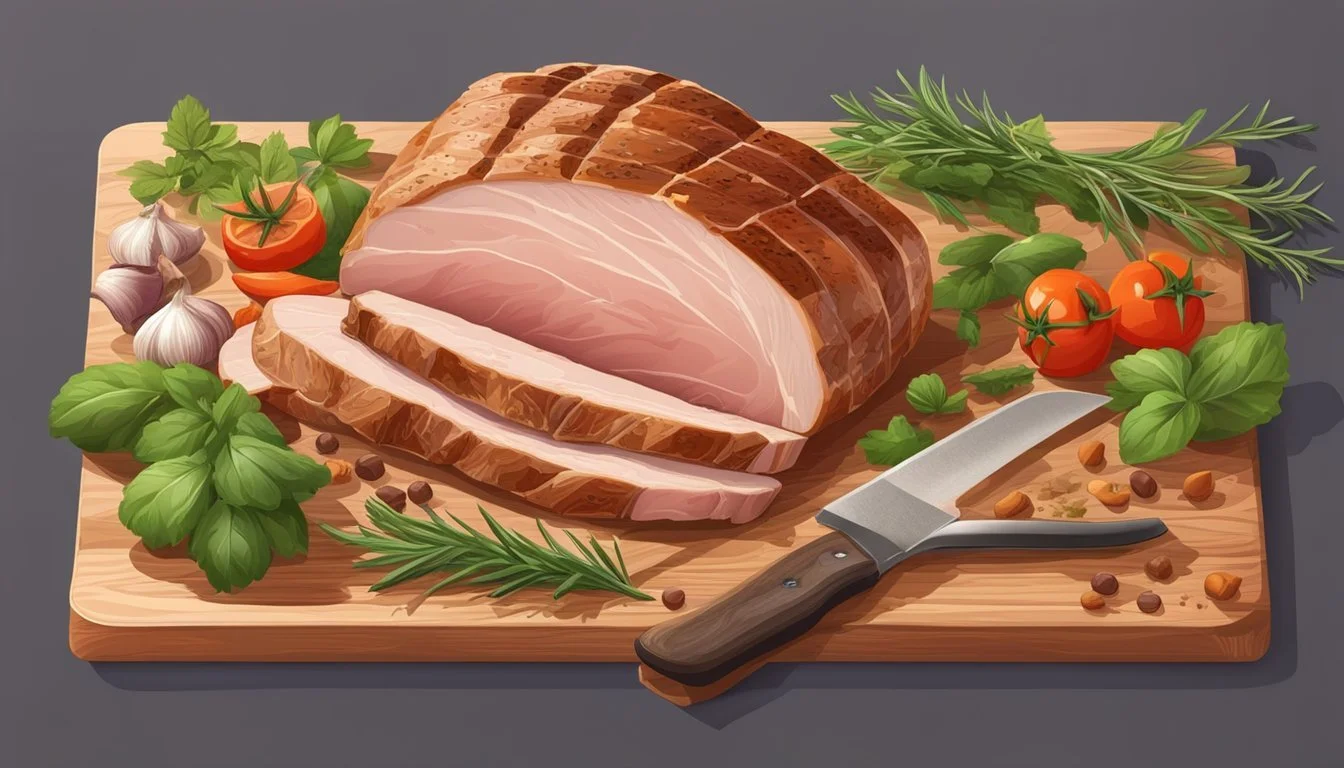How do you eat a pork loin?
Simple Tips for Perfect Preparation and Serving
Pork loin is a versatile and lean cut of pork that's favored for its ability to yield tender and delicious meals. It lends itself well to various cooking methods, but baking or roasting is commonly preferred to best preserve its moisture and flavor. When prepared properly, it makes for a succulent dinner centerpiece that can be enjoyed on both casual weeknights and festive occasions.
Serving a pork loin involves cooking it to the right internal temperature of 145 degrees Fahrenheit, which ensures the meat is safe to eat and still juicy. After removing it from the oven, it's important to let it rest for a few minutes. This resting period allows the juices to redistribute throughout the meat, which contributes to a more flavorful and moist eating experience.
When it comes to side dishes, pork loin pairs wonderfully with a variety of accompaniments. Classic choices include roasted or boiled potatoes, given a flavor boost with butter, honey, and spices, or creamy mashed potatoes enriched with cream cheese (how long does cream cheese last?). By balancing the lean quality of the meat with rich and hearty sides, one can create a balanced and satisfying meal.
Selecting the Pork Loin
When selecting a pork loin, it is essential to differentiate between pork loin and pork tenderloin (What wine goes well with pork tenderloin?), as these cuts differ in size, flavor, and cooking methods. Pork loin typically has a fat cap that enriches flavor, while pork tenderloin is smaller and leaner.
Identifying High-Quality Pork Loin
High-quality pork loin should exhibit a pinkish-red color, indicating freshness. The meat should feel firm to the touch and have a fine grain. A small layer of fat enhances flavor during cooking, so one should seek a pork loin with a consistent and intact fat cap. This fat layer should not be excessive but should cover the top of the loin to ensure a moist and flavorful roast after cooking.
Pork Loin Varieties
Pork loin comes in various cuts, each fitting for different dishes. Varieties include:
Bone-in Pork Loin: Offers deeper flavor and is suitable for roasting.
Boneless Pork Loin: Provides convenience and is easier to carve.
Each variety impacts the flavor and cooking method. The bone-in variety is considered traditional, while the boneless cut is more modern and versatile for quick preparations. When selecting a pork loin, the buyer should consider the required portion size and the desired outcome of the dish in terms of flavor and presentation.
Preparation Essentials
Proper preparation of pork loin is crucial for achieving the best flavor and texture. Careful attention to thawing and prepping before cooking sets the groundwork for a delicious roast.
Thawing Frozen Pork Loin
To ensure even cooking, one must thoroughly thaw a frozen pork loin before seasoning and cooking. Transferring the meat from the freezer to the refrigerator is the safest method and may require up to 24 hours, depending on the size of the roast. It's essential to plan ahead, as a hasty thawing process can negatively affect texture and taste.
Prepping Before Cooking
Before cooking a pork loin roast, one must address any remaining fat or skin. Trimming excess fat is advisable to avoid greasiness, leaving just a thin layer to keep the meat moist. Next, pat the pork loin dry with paper towels to ensure the seasonings stick and create a crisp exterior. Seasoning the pork is a key step. Create a robust dry rub combining:
Salt and pepper (to taste)
1 tbsp olive oil (to help the rub adhere)
1 tsp garlic powder
1 tsp onion powder
1 tsp paprika
1 tsp thyme
Rub this mixture evenly over the loin. Let the seasoned pork loin rest at room temperature for approximately 20 to 30 minutes before cooking. This step brings the meat to a more even temperature, promoting uniform cooking throughout.
Cooking Techniques
Preparing a pork loin can be approached through various cooking techniques, each yielding a distinct flavor and texture. The following methods—oven roasting, grilling, and slow cooking—showcase the versatility of pork loin while ensuring it remains juicy and flavorful.
Oven Roasting
Oven roasting is an efficient method to achieve a well-browned and tender pork loin. To begin:
Preheat your oven to a high temperature of around 425 degrees Fahrenheit.
Season the pork loin with your preferred spices or apply a dry rub for added flavor.
Bake in the oven for approximately 10 minutes to develop a seared crust.
Reduce heat to around 350 degrees Fahrenheit, cook until the internal temperature reaches 145 degrees Fahrenheit, which usually takes about 20 minutes per pound.
Rest the meat covered with aluminum foil before slicing to redistribute juices.
Use a meat thermometer to ensure proper cooking without overcooking.
Grilling
Grilling imparts a smoky flavor and is ideal for outdoor cooking events. Here's the process:
Heat the grill to a medium-high setting and prepare for indirect grilling.
Season or marinate the pork loin as desired.
Grill over direct heat to sear the outside, approximately 4-6 minutes per side.
Transfer to indirect heat and cover the grill, cooking until the internal temperature reaches 145 degrees Fahrenheit.
Use a meat thermometer to check for doneness. Let the pork loin rest wrapped in foil for a few minutes after grilling.
Slow Cooking
For a tender result with minimal effort, slow cooking is excellent:
Season the pork loin with herbs and spices.
Seal the pork using a pan with olive oil before placing it in the slow cooker for enhanced flavor.
Cook on a low setting for 4-5 hours or on a high setting for about 3 hours.
Rest the pork loin covered in aluminum foil after removing it from the slow cooker for tenderness.
Remember, a slow cooker varies in temperature, so adjust the cook time accordingly, always verifying doneness with a meat thermometer.
Seasoning and Flavoring
Proper seasoning and flavoring transform a pork loin into a succulent and tasty centerpiece of a meal. Ensuring an even distribution of spices and allotting sufficient time for the flavors to penetrate the meat are crucial steps for achieving a juicy and flavorful roast.
Dry Rubs
A dry rub typically includes a mix of salt, pepper, and a variety of ground spices and herbs tailored to enhance the natural flavor of pork loin. To prepare a dry rub, one might combine:
Kosher salt: to tenderize and bring out the meat's natural flavors
Black pepper: for a hint of spice
Additional ingredients such as garlic powder, onion powder, paprika, or brown sugar for depth
Application: The dry rub should be massaged into the pork loin evenly, ideally several hours before cooking to allow the flavors to permeate the meat.
Marinades
Marinades go a step further by introducing moisture, which can help to tenderize the pork loin, making it even juicier. They often contain acidic components like:
Vinegar or citrus juice: to break down tough fibers
Oil: (such as olive oil) to help distribute flavors and retain moisture
Ingredients for flavor: could include mustard, honey, or herbs like rosemary, all adding complexities to the taste profile.
Time to Marinate: Pork loin should be immersed in the marinade and left in the refrigerator, often for at least a few hours or preferably overnight to achieve full flavor infusion.
Herbs and Spices
Herbs and spices used alone or as part of a rub or marinade elevate the pork loin's taste. Some favorites include:
Rosemary: for its aromatic and earthy tones
Thyme and sage: for their warm and peppery notes
Usage: Fresh herbs (how long do fresh herbs last?) offer a brighter flavor when sprinkled on after cooking, while dried herbs are more concentrated and ideal for rubs and marinades before cooking.
Cooking to Perfection
Achieving a perfect pork loin that's juicy and cooked to the right doneness requires close attention to preparation technique and cooking temperature. A medium cook with just a hint of pink ensures the pork loin is not overcooked and tough, but rather perfectly tender.
Determining Doneness
To attain a juicy pork loin that is cooked just right, it is critical to monitor its internal temperature closely. A cook aiming for a medium finish should look for an internal temperature of 145°F, which typically means the pork will have a slight pink hue in the center. It's important to use an instant-read thermometer to check the temperature of the pork loin to prevent overcooking and drying out.
Recommended Internal Temperatures:
Medium: 145°F (slight pink center)
Well Done: 160°F (no pink)
Avoiding Common Mistakes
Several common missteps can result in less-than-perfect pork loin, such as overcooking, leading to a tough and dry end product. To prevent this, one should:
Not skip rest time: Resting allows juices to redistribute. Rest for at least 5-10 minutes after cooking.
Avoid high heat throughout: Start at a high temperature to develop a brown color, then lower the heat to allow the meat to cook through gently.
Eliminate guesswork: Always use an instant-read thermometer to measure doneness.
By following these guidelines, a cook can serve a perfectly cooked pork loin that is juicy and enjoyable.
Resting and Carving
Proper resting and carving of pork loin are crucial steps to ensure that the meat is juicy and flavorful. These techniques allow for the juices to be redistributed and make for easier, cleaner slicing.
The Importance of Resting
The process of resting pork loin is vital for retaining its juices. Once removed from the oven or cooking device, the internal temperature of the pork loin continues to rise due to carry-over cooking. During this time, the juices, driven to the center by the heat, are reabsorbed into the muscle fibers, resulting in a more moist and tender cut when sliced. Resting times can vary:
Steaks and chops: Typically rest for 15 minutes
Thicker pork loin or roasts: Recommended to rest for at least 15-30 minutes
Slicing Techniques
When the resting period is over, slicing the pork loin correctly is key to showcasing its tenderness. Always slice against the grain, meaning perpendicular to the muscle fibers. This breaks them into shorter lengths, making the meat easier to chew. The recommended thickness for pork loin slices falls between ¼ and 3/8 inch. Steps to proper carving include:
Position the pork loin flat meat side down on the cutting board.
Stabilize the roast with a carving fork.
Start at the top, slicing horizontally across the grain.
Remove any strings or netting encountered during carving.
By following these resting and slicing procedures, the pork loin retains its juiciness and offers a more pleasurable eating experience.
Serving Suggestions
The perfect pork loin dinner is complemented by well-chosen side dishes and served with an eye for presentation. Selecting sides that balance the flavors and textures of the pork loin is key, and how it is presented on the plate can turn a simple meal into an elegant culinary experience.
Sides and Accompaniments
Potatoes: A classic choice, potatoes can be served boiled and smashed with butter and hot sauce or as creamy mashed potatoes with a hint of cream cheese for richness.
Rice: Fried rice is a versatile side that can incorporate vegetables and even bits of leftover pork loin.
Salad: A light and fresh component like a fig and arugula salad adds a peppery contrast to the meal.
Vegetables: Roasted broccoli and brussels sprouts provide a crispy, caramelized edge that pairs wonderfully with the savory pork.
Gravy: A homemade gravy using the pan drippings from the pork loin can elevate the dish, adding a delicious moisture and depth of flavor.
Presentation Tips
Slicing: Present the pork loin by slicing it into even, succulent pieces to showcase its tenderness.
Arrangement: Arrange the plate by placing the pork loin at the center, surrounded by the colorful sides to create a visually appealing palette.
Garnish: Garnish with fresh herbs like rosemary or sage to add a pop of color and aroma, hinting at the flavors infused in the pork loin recipe.
Storing Leftovers
When dealing with leftover pork loin, preserving its freshness and taste is crucial for enjoying it later. Proper storage methods ensure that the pork loin remains safe to consume and retains its flavor. Use an airtight container to maximize preservation, regardless of the chosen storage method.
Refrigerating
The refrigerator is suitable for short-term storage of cooked pork loin. One should place the pork loin in an airtight container within two hours after cooking to prevent bacterial growth. Stored this way, the pork loin can last for up to four days.
Steps for Refrigerating Cooked Pork Loin:
Cool the roasted pork loin (What wine goes well with roasted pork loin?) to room temperature.
Transfer to an airtight container.
Seal tightly and place in the refrigerator.
Freezing
For long-term storage, freezing is the best option. A roasted pork loin can be frozen in an airtight container or secure freezer bag, and it will maintain its quality for up to three months. Always label the container with the current date to keep track of how long the pork loin has been stored.
Tips for Freezing Cooked Pork Loin:
Ensure the pork loin has cooled to room temperature before freezing.
Wrap the pork loin tightly in plastic wrap or aluminum foil before placing it into an airtight container or freezer bag.
Label with the freeze date for future reference.
Health and Nutrition Facts
Eating pork loin can be beneficial to one's diet, providing substantial macronutrients and essential micronutrients. It is relatively lean, especially when the separable fat is trimmed away, and a good source of various vitamins and minerals.
Macronutrients
Calories: Lean pork loin is a calorie-dense food, providing a significant amount of energy. A serving of 3.5 ounces (100 grams) of cooked pork loin typically contains approximately 192 calories.
Protein: It is rich in high-quality protein, with 100 grams of cooked pork loin contributing about 25-30 grams of protein, essential for muscle maintenance and growth.
Fat: The fat content varies depending on how the pork loin is processed and prepared. Lean center loin chops, for instance, contain less fat compared to other cuts. The total fat in a 100-gram serving can range from 7 to 20 grams, with saturated fat composing a smaller percentage of this.
Saturated Fat: This type of fat is present in pork loin in varying amounts, with a 100-gram serving containing about 2-7 grams of saturated fat.
Micronutrients
Vitamins and Minerals: Pork loin is also a valuable source of micronutrients.
Calcium: While not a primary source, it provides a small amount of calcium necessary for bone health.
Cholesterol: Cholesterol content in pork loin is generally moderate, and consuming lean cuts can help maintain healthy levels.
Sodium: Pork loin has naturally occurring sodium, but the content can increase with preparation and cooking methods. A 100-gram serving can have upwards of 60mg.
Vitamin C: Pork loin is not a significant source of vitamin C; however, like many meats, it can be paired with vitamin C-rich foods to complement the meal.
Remember, the nutritional content of pork loin can vary based on factors such as the cut, cooking method, and any additional ingredients used in its preparation.
Recipe Ideas
When considering how to enjoy a pork loin, the avenues are numerous, but two stand out for their simplicity and flair: the classic pork loin roast approach and innovative pairings that introduce new flavors.
Classic Pork Loin Roast
The traditional pork loin roast remains a timeless favorite for its simplicity and the tenderness it yields. One begins by preheating the oven to a high temperature, aiming for a golden brown crust. The heat is then reduced to cook the pork loin through while maintaining its juiciness. A simple seasoning blend, often incorporating fresh herbs and garlic, complements the lean cut effectively. This method is straightforward, quick, and perfect for anyone looking for an easy, yet delicious meal.
Preparation: High initial oven heat, reduced after browning
Seasoning: Fresh herbs, garlic
Serving Suggestion: Pair with roasted vegetables or mashed potatoes
Innovative Pairings
For those eager to experiment, pork loin's versatility shines when paired with unconventional ingredients. An innovative dish might include tender chunks of slow-cooked pork loin layered in a cheesy nacho casserole, with tortilla chips baked right in. Alternatively, a sweet and spicy twist can be achieved by tossing boiled, smashed potatoes with a mix of honey, hot sauce, and red pepper flakes, complementing a roasted pork loin. These combinations offer a refreshing take on pork loin recipes, showcasing the cut's adaptability to various flavors and preparations.
Casserole: Slow-cooked pork with nacho cheese and baked tortilla chips
Spicy Potatoes: Boiled, smashed potatoes with honey, hot sauce, and red pepper flakes
Additional Tips and Tricks
When preparing a pork loin, the foundation of a flavorful and juicy meal begins with selecting the right cut and using the correct cookware. These additional tips and tricks ensure a palate-pleasing result every time.
Shopping Guide
One should select a pork loin with a pink hue and a small amount of marbling to ensure optimum flavor. The ideal thickness for a pork loin is about 2 inches, which allows it to retain juices and flavor during cooking. If one desires a cut resembling a prime rib, they can ask the butcher for a pork loin with a generous fat cap and the ribs intact.
Cookware Recommendations
It is recommended to use a heavy cast iron skillet for searing the pork loin, as it provides consistent heat and imparts a beautiful crust. For roasting, one might use a roasting rack set in a sturdy sheet pan; this setup allows for even air and heat circulation, contributing to a juicy and evenly cooked pork loin.

